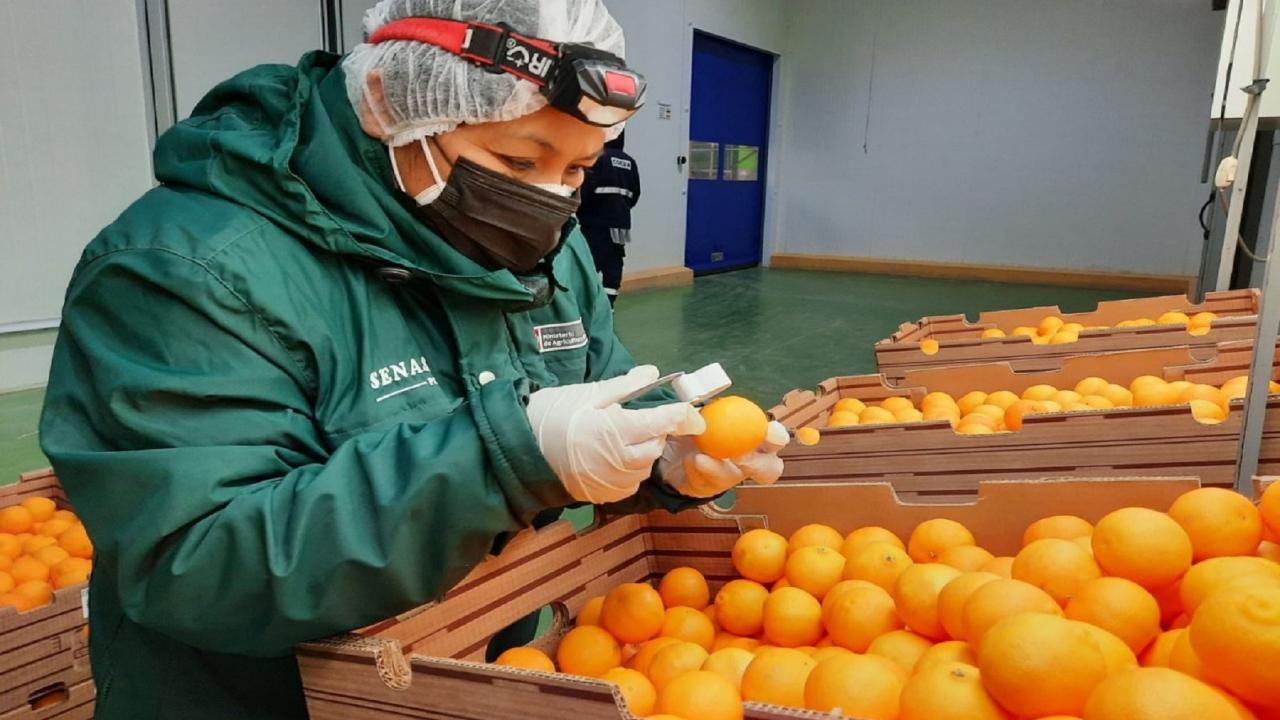
Producers from Ica, Lima, Piura, La Libertad, Junín, Arequipa, Ancash and Lambayeque will be able to sell their products to this market this year, Senasa assured.
The Peruvian Government, through the Ministry of Agrarian Development and Irrigation (Midagri), announced the signing of the phytosanitary protocol that will allow the export of fresh citrus fruits (mandarins, oranges, tangelos and limes) from Peru to New Zealand.
In a bilateral technical meeting held today with the Ministry of Primary Industries of New Zealand (MPI), the Senasa delegation, headed by the national head, Vilma Gutarra, and the representatives of the Embassy of Peru in New Zealand, signed the Work Plan to begin exports to this important market.
"Given the country's agro-export potential, it is essential to continue diversifying access to new markets for Peruvian products, thereby generating greater commercial opportunities for producers. These achievements are the result of the actions of Midagri - Senasa at the national level, such as phytosanitary surveillance and quarantine pest control, which is carried out hand in hand with agricultural producers," said the head of Senasa, Vilma Gutarra.
Through these agreements, producers from Ica, Lima, Piura, La Libertad, Junín, Arequipa, Ancash and Lambayeque will be able to send their products to this market this year, thus adding to the shipments already made to the United States, the Netherlands, England, Mexico, Canada, Chile, among others.
In response to this important news, the head of Midagri, Angel Manero, stressed that "from the Government we will continue to promote the growth of the sector, unblocking world-class irrigation projects that will allow us to expand the agricultural frontier and continue consolidating the country as one of the main food suppliers in the world."
BILATERAL TECHNICAL MEETING
Peruvian phytosanitary authorities have been participating in a technical meeting in Wellington, capital of New Zealand; the agenda of which also seeks to complete the Pest Risk Analysis (PRA) for blueberries and to have, before the end of the year, the draft of the sanitary standard for the export of the Peruvian "blue gold"; since the technical audit on the management of the crop was already carried out in February of this year.
Peru currently has phytosanitary requirements for export to 66 countries, with the highest demand destinations being the United States, the Netherlands, China and the United Kingdom. The regions with the largest areas certified for export are La Libertad, Lambayeque, Ica, Piura, Ancash and Lima.
Peru is one of the agricultural exporting countries that has been gradually positioning itself in its destination markets, as a result of the sanitary and phytosanitary measures that SENASA has implemented in the export processes, providing the necessary technical support to shipments from our country.
Currently, Peru has managed to establish itself as the world's leading agricultural exporter of blueberries, grapes and quinoa, second place in avocados and asparagus, and fourth place in terms of mango exports; however, Peru is steadily increasing its exports every year.
In this way, the Peruvian Government has been promoting the growth of the agricultural sector, generating greater demand and gaining access to new markets in the world, with a view to exceeding agricultural export sales of 11.5 billion dollars.









